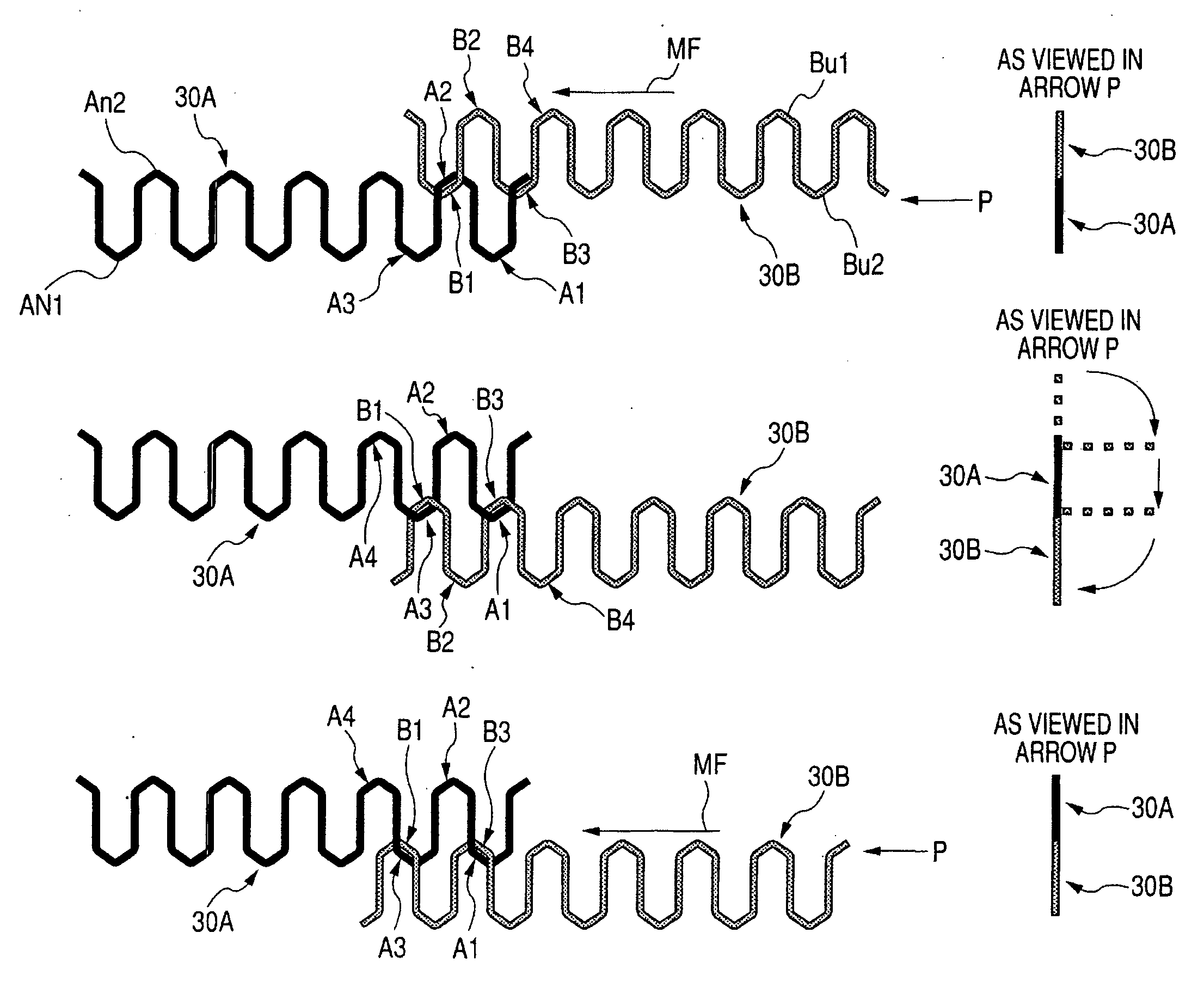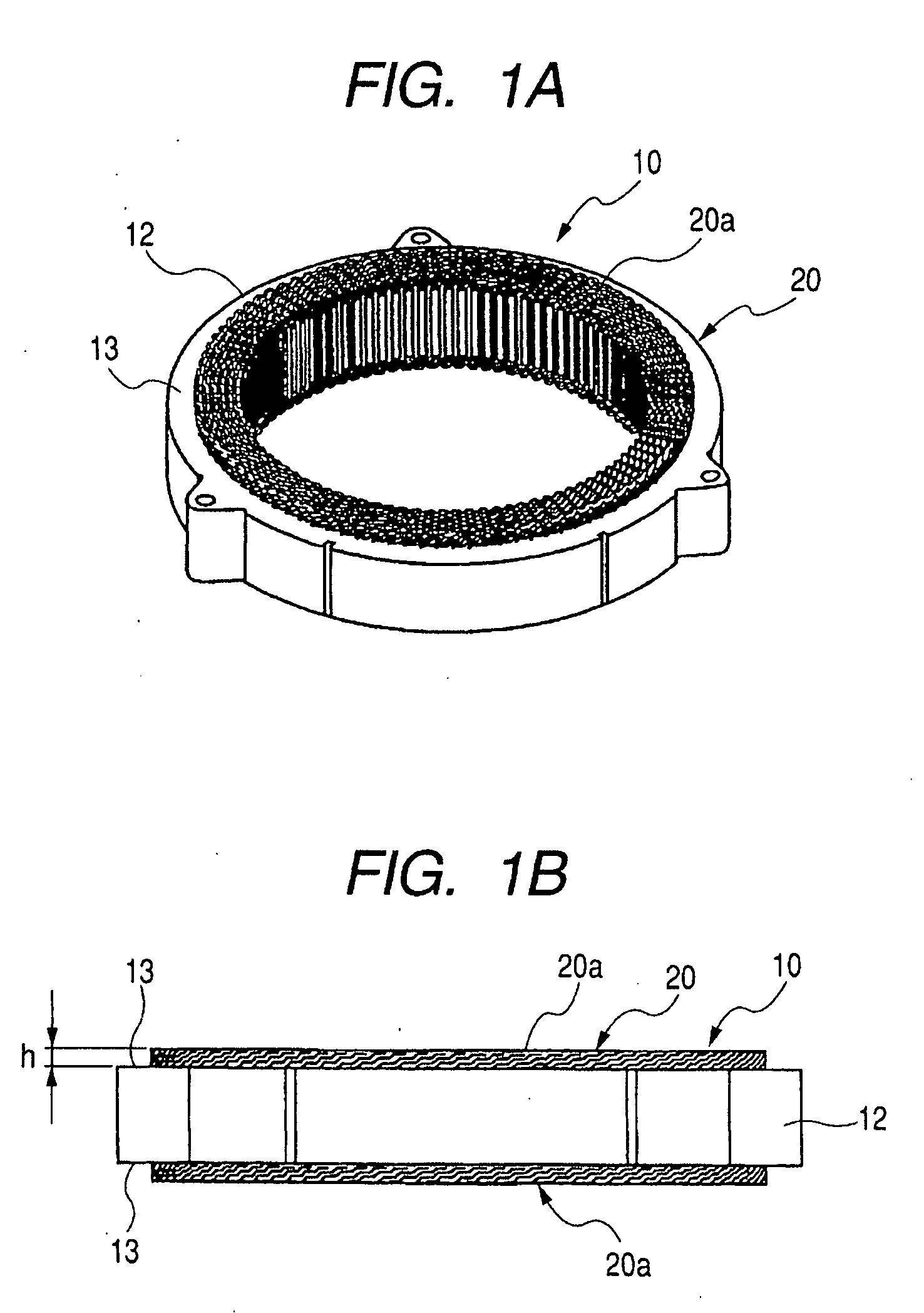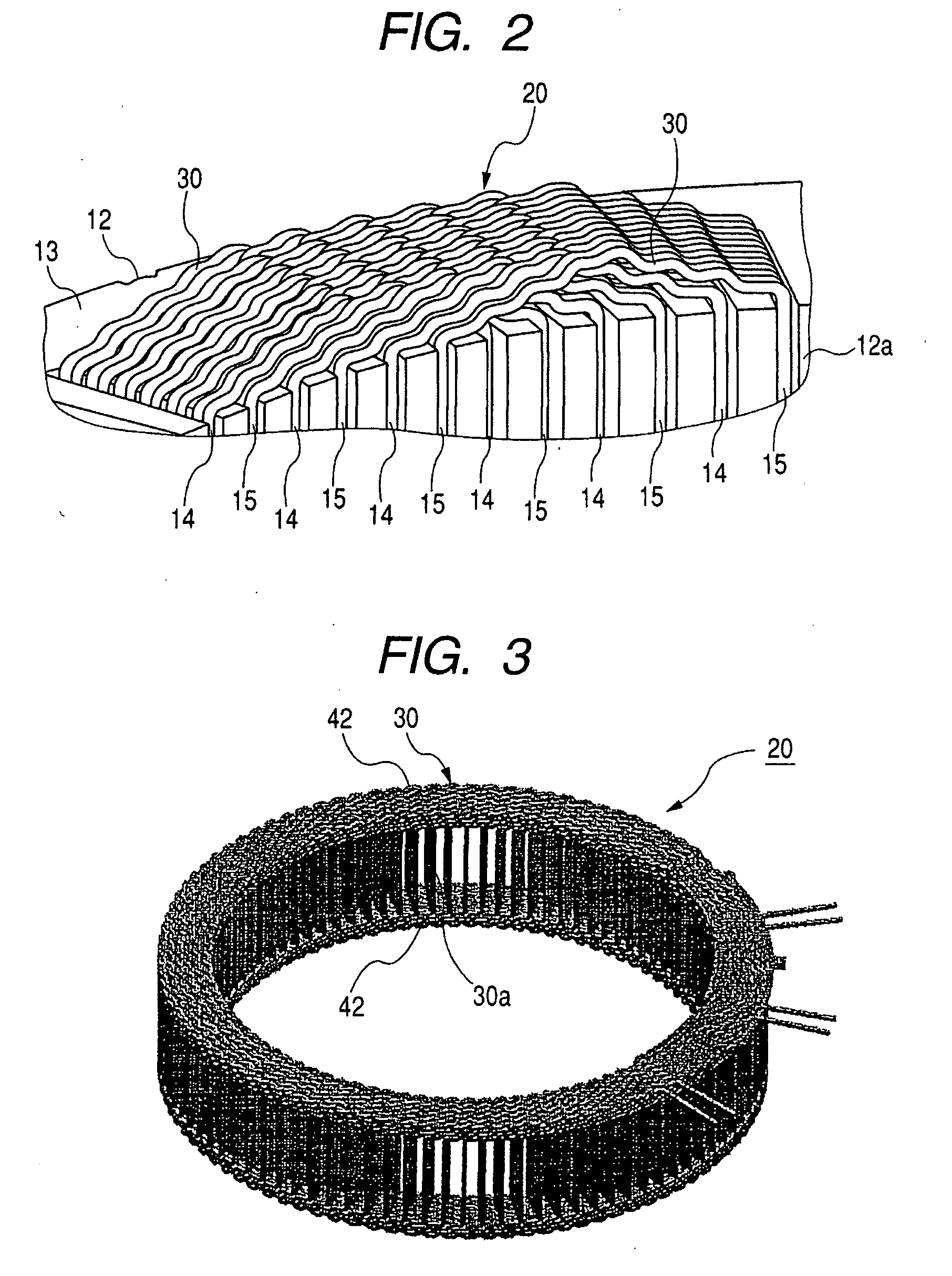Method of manufacturing coil assembly
a technology of rotary electric machines and coil wires, which is applied in the manufacture of stator/rotor bodies, magnets, magnetic bodies, etc., can solve the problems of increasing the number of man-hours and the risk of damage to the insulating film covering the surface of each coil wire segmen
- Summary
- Abstract
- Description
- Claims
- Application Information
AI Technical Summary
Benefits of technology
Problems solved by technology
Method used
Image
Examples
first embodiment
[0067]Next, a method of manufacturing the coil assembly 20 of a first embodiment will be described below in detail with reference to FIGS. 8A-8C and 9A-9C.
[0068]FIGS. 8A-8C and FIGS. 9A-9C are views illustrating how the coil wire segments are woven using a weaving method employed in the method of manufacturing the coil assembly 20 of the present embodiment. In FIGS. 8A-8C and FIGS. 9A-9C, right-hand views show first and second coil wire segments remained under woven states as view in arrows P.
[0069]With the first embodiment, first and second coil wire segments 30A and 30B are used each of which is preliminarily processed by forming linear shaped wire segments with the use of a pressing die and has the same shape as the coil wire segment 30 shown in FIG. 5. Moreover, it will be appreciated that the first and second coil wire segments 30A and 30B have turn portions similar in shape to those shown in FIG. 7 but simply illustrated in linear shapes in FIGS. 8A-8C and 9A-9C, respectively....
second embodiment
[0094]Next, a method of manufacturing a coil assembly 20A of a second embodiment will be described below with reference to FIGS. 10A to 10C and FIGS. 11A to 11D.
[0095]FIGS. 10A to 10C and FIGS. 11A to 11D are views illustrating how a weaving method is carried out to manufacture the coil assembly 20A of the present embodiment. In FIGS. 10A to 10C and FIGS. 11A to 11D, right-hand views show first and second coil wire segments remained under woven states as view in arrows P, respectively.
[0096]Hereunder, description is made of the weaving method for weaving coil wire segments with reference to FIGS. 10A to 10C and FIGS. 11A to 11D.
[0097]The first and second coil wire segments 30A and 30B, used in the second embodiment, have the same structures as those used in the first embodiment. In FIGS. 10A to 10C and FIGS. 11A to 11D, the respective turn portions, each formed in the stepwise shapes, of the first and second coil wire segments 30A and 30B are simply illustrated in linear shapes.
[009...
PUM
| Property | Measurement | Unit |
|---|---|---|
| Angle | aaaaa | aaaaa |
Abstract
Description
Claims
Application Information
 Login to View More
Login to View More - R&D
- Intellectual Property
- Life Sciences
- Materials
- Tech Scout
- Unparalleled Data Quality
- Higher Quality Content
- 60% Fewer Hallucinations
Browse by: Latest US Patents, China's latest patents, Technical Efficacy Thesaurus, Application Domain, Technology Topic, Popular Technical Reports.
© 2025 PatSnap. All rights reserved.Legal|Privacy policy|Modern Slavery Act Transparency Statement|Sitemap|About US| Contact US: help@patsnap.com



